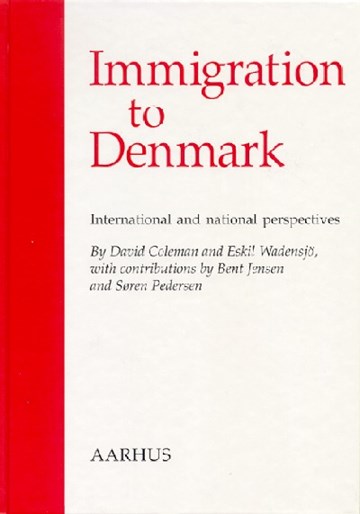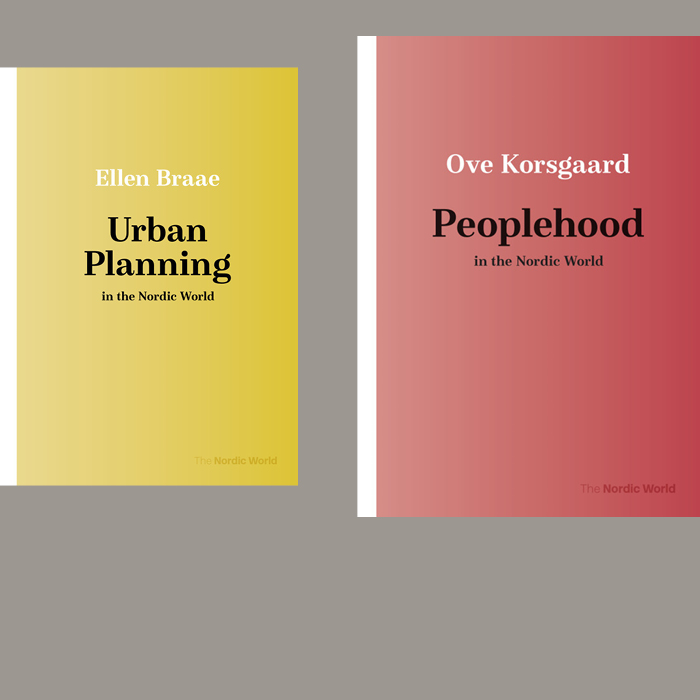
Immigration to Denmark
International and National Perspectives
A part of the subject area Social sciences
Out of stock
With contributions by
Bent Jensen and
Søren Pedersen
More about the book
About the book
In Immigration to Denmark the British demographer, David Coleman, places immigration in an international framework, describing the importance of global population trends for international migration, together with the main destinations of these migrations, and, in particular, the migration streams to Europe.
Coleman discusses both ratified international treaties and national laws passed in recent years in an attempt to regulate migration towards the European continent.
The Swedish economist, Eskil Wadensjö, analyses the importance of immigrants to the economy in the 1990s, while Søren Pedersen examines the actual development of immigration to Denmark from the 1960s onwards.
Finally, Bent Jensen presents a review of the public debate on immigration topics in major Danish national newspapers from 1964 to the beginning of the 1990s.
Table of contents
Chapter 1: International Migration in the context of global demographic change
1.1 Introduction
1.2 Population trends outside Europe
1.3 Demographic fault-lines: The Mediterranean
1.4 Demographic fault-lines: China, Central Asia, and Africa
1.5 Eastern Europe - a missed opportunity
1.6 Population trends in Western Europe
1.7 Population and migration processes
1.8 Changing the balance
1.9 Conclusions
Chapter 2: International Migration to Europe in the late 1990s
2.1 Introduction
2.2 Cautionary tales on migration data
2.3 International migration to Europe: patterns and trends
2.4 Foreign population
2.5 Components of migration
2.6 Components of migration streams to the West
2.7 Demographic patterns of immigrant populations
2.8 Conclusions
Chapter 3: Migration Policies
3.1 The Policy Challenge
3.2 Conflicting aims and diverse responses
3.3 The expansion of frontiers
3.4 Categories of acceptance
3.5 Irregular migration - asylum policy
3.6 Illegal immigration
3.7 Integration policies
3.8 Conclusions
Chapter 4: Migration to and from Denmark during the period 1960-97
4.1 Introduction
4.2 Immigration: 1960-97
4.3 Labour market conditions
4.4 Summary
Chapter 5: Thirty years of press debate on 'the foreigners' in Denmark Part I: Migrant and guest workers, 1963-80
5.1 Introduction
5.2 Choice of newspapers
5.3 The opening debate: Economic boom and labour shortages
5.4 The pork glut in 1965: A job for Spanish workers?
5.5 On a broad front: The employers wanted foreign labour
5.6 The first foreign workers arrive: The debate from 1967 up to the ban on immigration in 1970
5.7 A stop for immigration in 1970 and 1973, Guest workers and recession
5.8 Guest workers and recession
5.9 Summary of the debate from the beginning of the 1960s up to around 1980
Chapter 6: Thirty years of press debate on 'the foreigners' in Denmark Part II: The debate on asylum-seekers
6.1 Introduction
6.2 'The Queen told us off': The debate after the new aliens law came into force, 1984-85
6.3 1986: Another round in the battle over legislation on aliens
6.4 In appropriate numbers? Debate and party political differences concerning the revised Aliens Act
6.5 The municipal dimension
6.6 The debate about refugees from former Yugoslavia
6.7 Summary
6.8 Overall conclusions
Chapter 7: Economic Effects of Immigration
7.1 Introduction
7.2 Effects on Wages and Prices
7.3 Redistribution via the Public Sector: Principles
7.4 Redistribution via the Public Sector in Denmark: Empirical Data
7.5 Employment, Unemployment, and Inflation
7.6 Other Indirect Effects
7.7 Conclusions
Appendices
Publications from the Rockwool Foundation Research Unit




